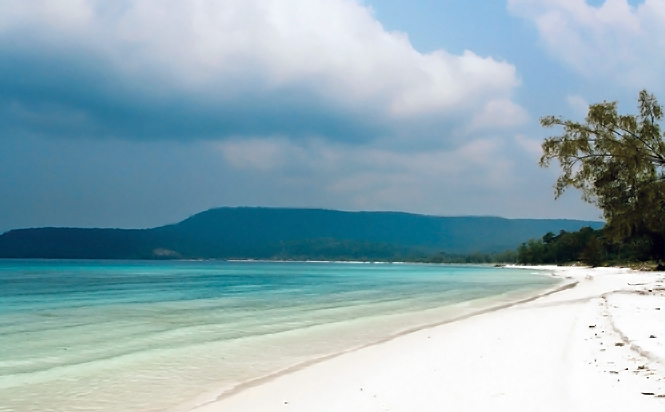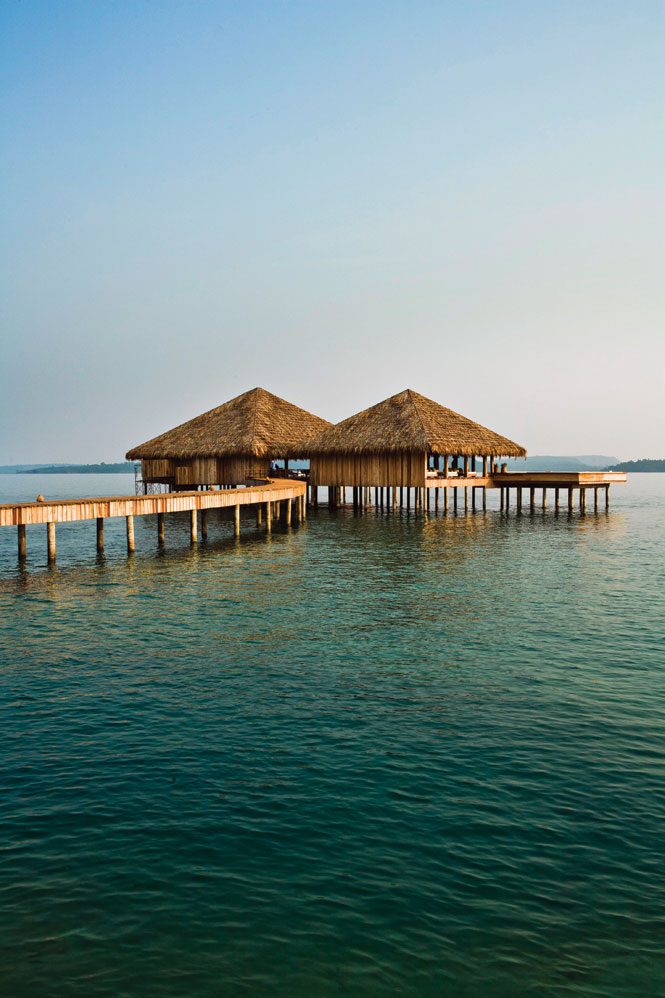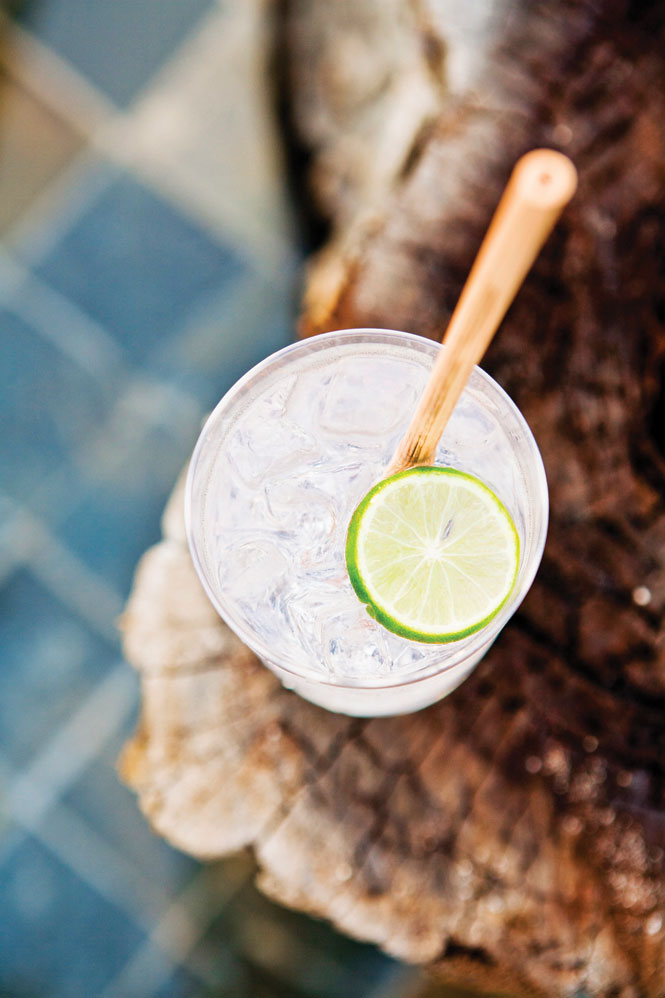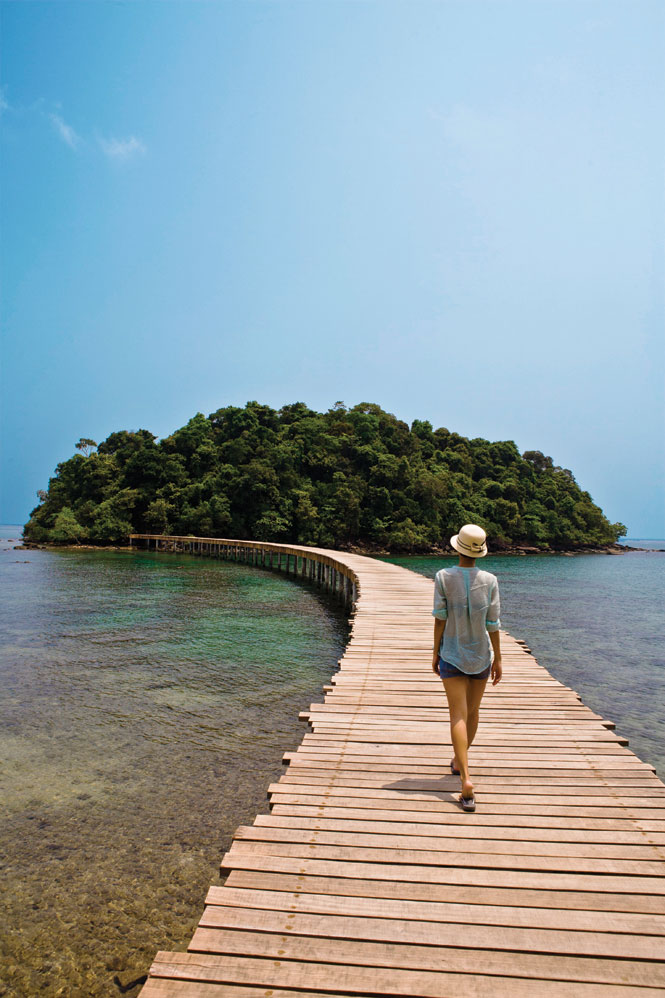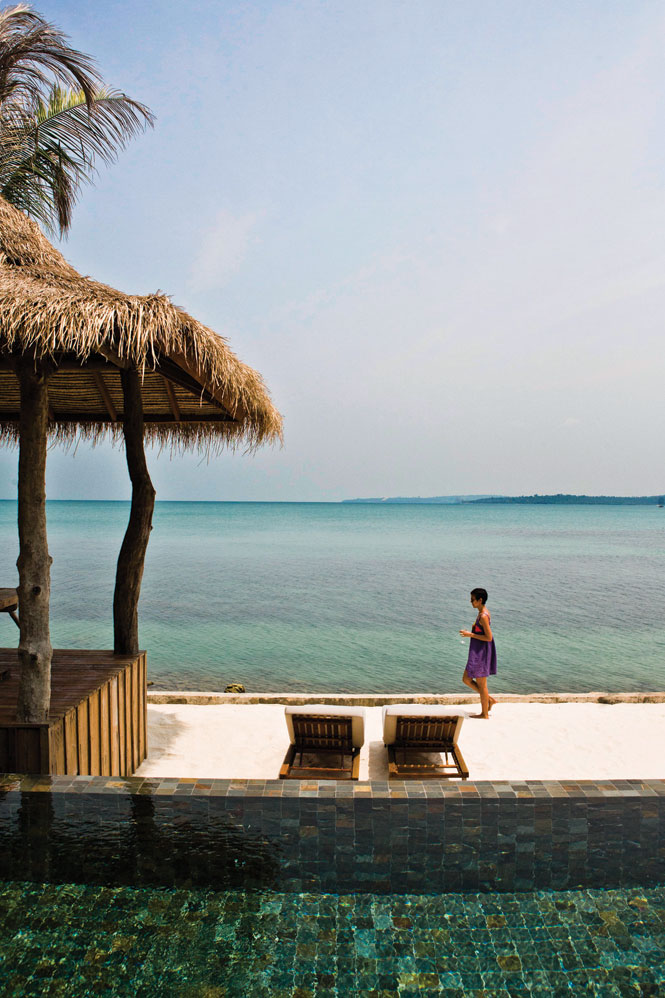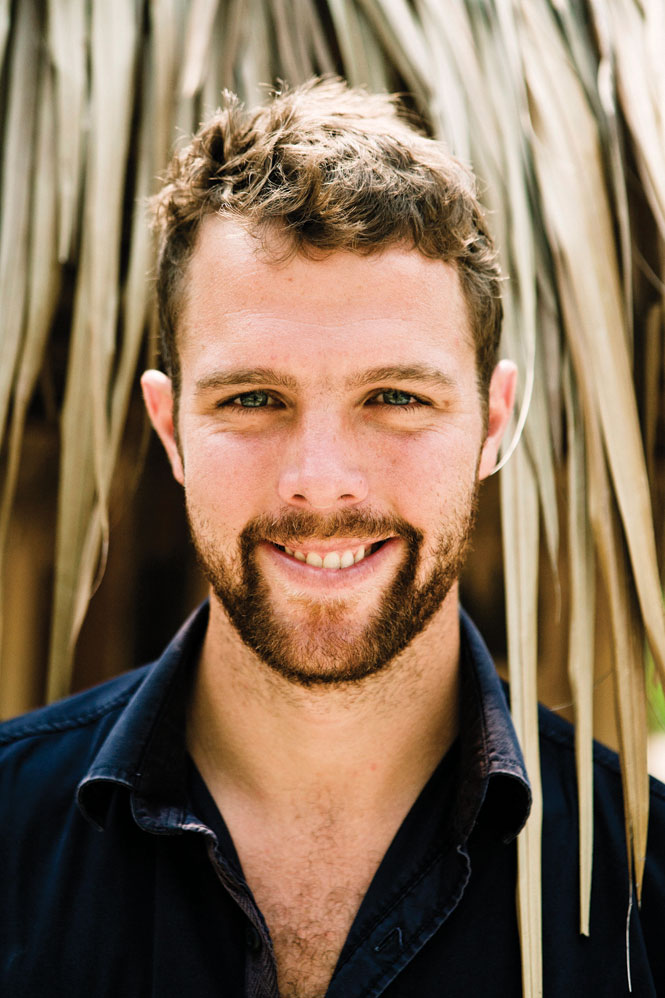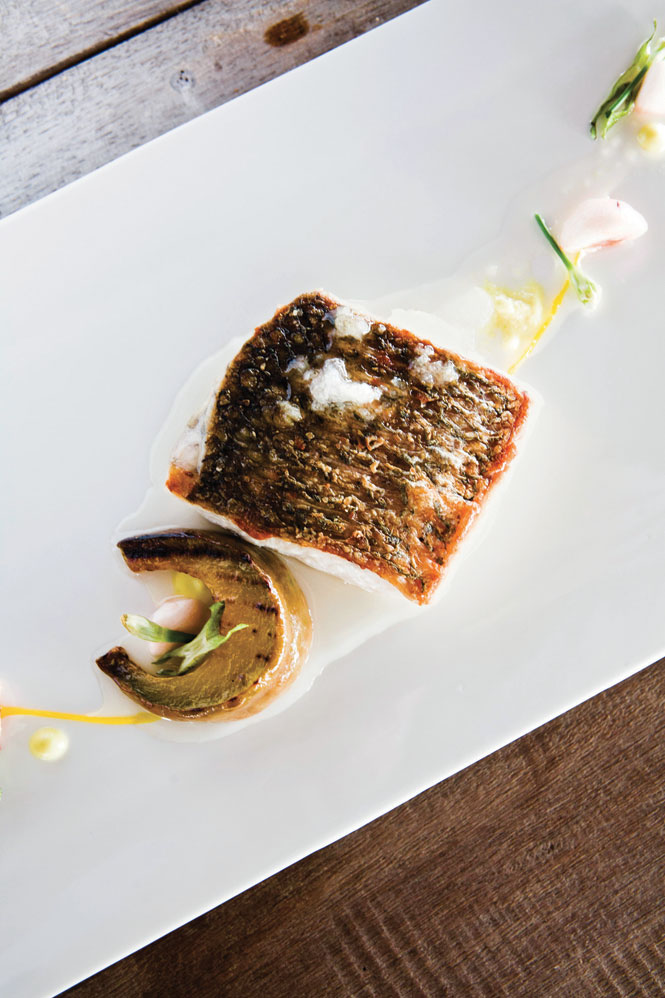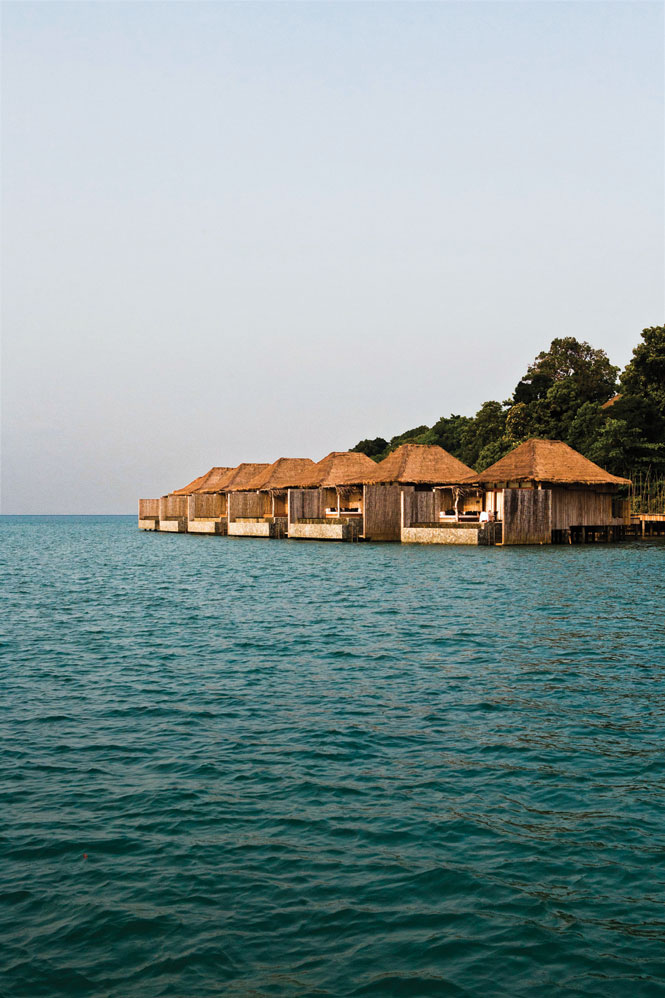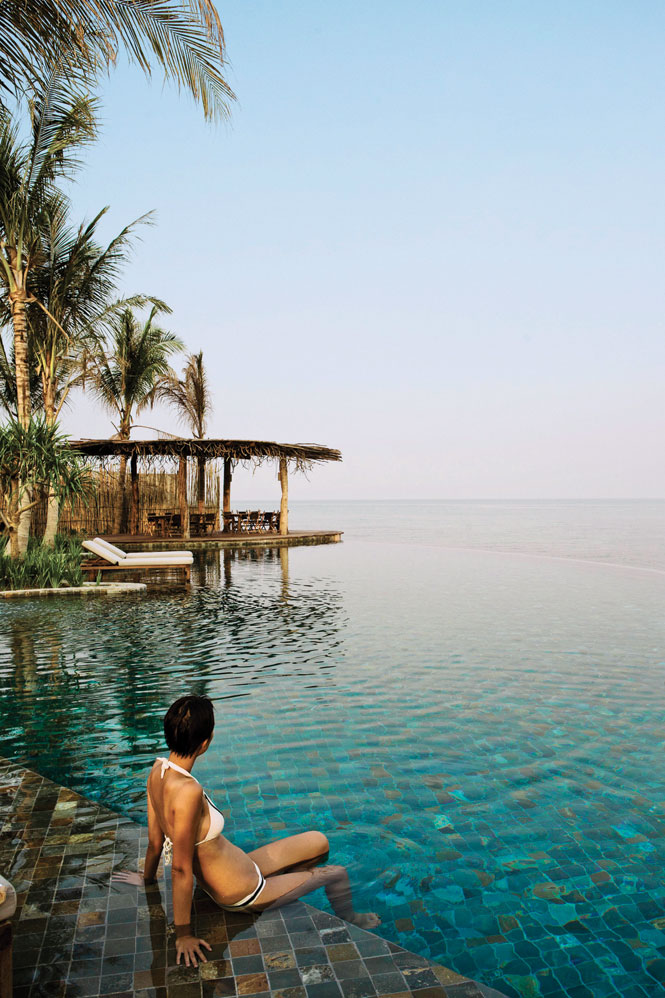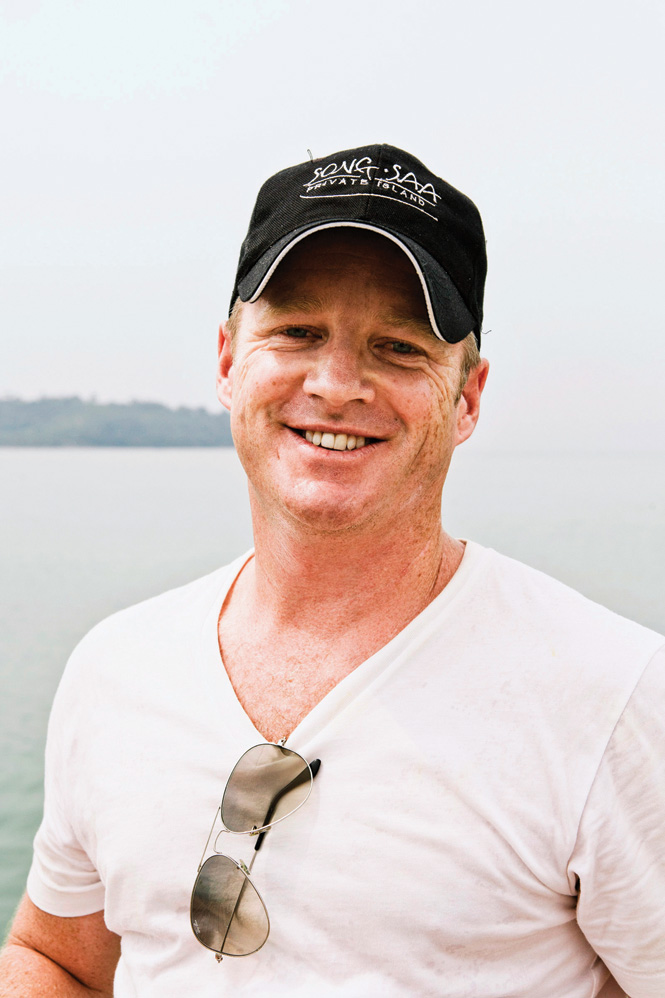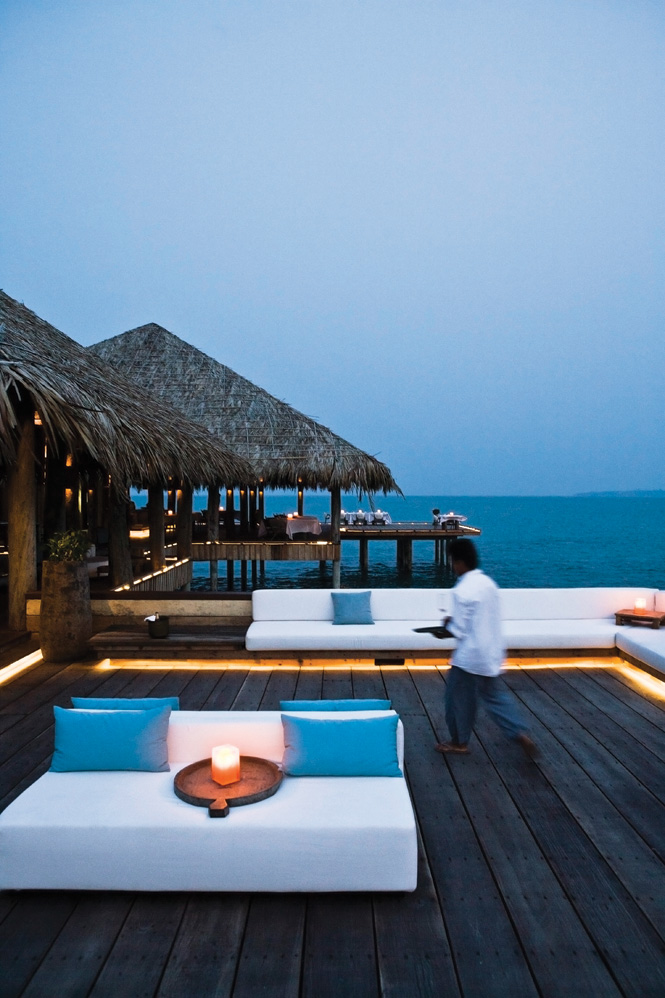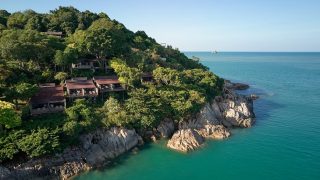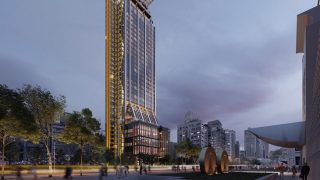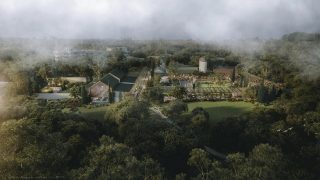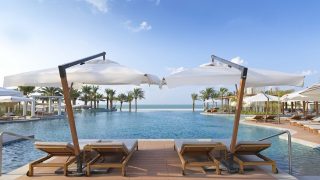Cambodia’s first upscale island resort, Song Saa brings unprecedented luxury to the waters off Sihanoukville. Could it also herald a new era for tourism along this once benighted coast?
By Leisa Tyler
Photographs by Christopher Wise
My first morning at Song Saa, I wake up feeling a bit disoriented. Emerging from a cocoon of silky cotton sheets and goose-down pillows, I pad across the cool floorboards of my room, flick on the espresso machine, and head outside to a daybed shaded by switches of driftwood. Beyond my plunge pool, the sun, still low in the sky, flecks the water like a thousand glittering diamonds. I spot a clutch of tur-quoise-and-white boats sailing in from a night of fishing. And on the far side of the channel is Koh Rong, an island of rolling forested hills and long stretches of empty snow-white sand. The only question is, could this really be Cambodia?
Song Saa Private Island lies just 29 kilometers off Sihanoukville, Cambodia’s largest seaside town. Yet it seems another world entirely. I have every luxury at hand, from a bottle of champagne in the fridge to plush Ploh robes and a pedigreed chef on call —almost inconceivable for a stretch of remote coastline that only a decade ago was mired with lingering remnants of the Khmer Rouge. Positioning itself at the top end of the market (rooms go for almost US$1,600 a night in the high season), Song Saa is forging a new future for this coastline, and perhaps even redefining Cambodia’s entire tourism industry.
I first came to the Song Saa (“Sweetheart”) islands—two tiny rocky outcrops officially known as Koh Ouen and Koh Bong—in 2008. I had met their owners, laid-back Sydney couple Rory and Melita Hunter, in a bar in Phnom Penh a few days earlier, and they invited me to join them on the sweethearts for a long weekend. The Hunters had built a makeshift beach shack on Koh Ouen, the smaller of the islands. It was simple but idyllic, with two overwater bedrooms positioned to catch the sea breeze and a cold-water shower fashioned from a stalk of bamboo. We spent our days sailing to Five Mile Beach on neighboring Koh Rong, and nights toasting the sunset with Angkor beer and feasting by torch light on fresh grilled fish.
Besotted with their island hideaway, I decided to stay on for a few days after the Hunters left, returning to Sihanoukville in an old fishing boat that once a week ferried locals from Prek Svay village on Koh Rong to the mainland for supplies. When the boat pulled up to the Hunters’ jetty the young children on board started to cry. They had never been so close to a white person before, someone explained.
The Hunters—then both in their early 30s—had purchased “local ownership” (essentially squatting rights) of Koh Ouen and Koh Bong and were in the process of obtaining a leasehold from the government. The latter, eager to encourage development, had no qualms about handing the Hunters tenancy of the uninhabited islands. But there was one condition: they had to develop them for tourism.
In 2008 Cambodia’s seaboard, a 440-kilometer stretch of virgin coastline with five dozen largely deserted islands offshore, was being touted as the next big thing. “The last undiscovered paradise!” or “The Thailand of 30 years ago!” sung PR spiels. “We are hoping to build a tourism corridor from Thailand right through to Vietnam,” Dr. Thong Khon, Cambodia’s tourism minister, told me at the time. It was like a gold rush. The government had cordoned off parcels of beachfront and several islands to property developers who were busy dreaming up elaborate schemes for them. There were plans for a US$3 billion casino and resort complex on Koh Ta Kiev, a large islet off the coast of Ream National Park. Shopping malls and even racecourses were envisioned for other islands, such as Koh Poah, which now has a bridge linking it to Sihanoukville. And on Koh Rong, which is about the size of Hong Kong Island, Asia’s “first environmentally planned resort island” was being drafted. The blueprint boasted 35 fully serviced resorts, 16 villa communities, golf courses, schools, a hospital and marina, and an international airport.
The Hunters were not exempt from the building bug. Having en-listed the services of Bangkok-based hotel architect Bill Bensley, they were in the process of converting their two tiny islands into a 12-room, US$45 million resort that would be managed by Per Aquum, who run Dubai’s Desert Palm retreat and Huvafen Fushi in the Maldives.
These were vast ambitions for a remote region with decrepit infrastructure, frequent power outages, and no scheduled flights. Kep, the seaside village where Phnom Penh’s elites once built their holiday villas, had been among the first and last places to be occupied by the Khmer Rouge, who had a particular dislike for its languid, hedonist lifestyle. Even up until the early oughties the south coast was controlled by militia. Armed with rusting AK-47s, these young men worked the highway between Phnom Penh and Sihanoukville, stopping cars already slowed by potholes and herds of cows to extort money.
By 2008 the government had taken back control of the area and these troubles were but a memory. Then the global financial crisis hit, delaying or extinguishing developments along the south coast. The Hunters were forced to scrap their original plans. A few days later, Melita was diagnosed with cancer (she has since fully recovered).
Shaken, but not defeated, the couple decided to build a resort by themselves. Although they had no previous hotel or hospitality experience, with Rory in charge of the business end and Melita doing the design, the Hunters opened Song Saa Private Island in March this year. It is, so far, the only project from the 2008 gold rush to come to fruition.
“It’s amazing how your darkest hour ends up being the brightest,” says Rory, recalling the day he and his wife—who was still in the hospital at the time—made a pact to continue with their dream.
I have just arrived on Song Saa and Rory, looking every bit the castaway in shorts, a T-shirt, and bare feet, is showing me around the resort, a series of wood-and-thatch villas that fan out from the small beach where their shack used to be. In tow is his four-year-old son Naryth, a Khmer boy the Hunters adopted after Melita’s illness prevented them from having children of their own.
On the walk to my overwater villa, Rory recounts the complications associated with building a resort on this isolated stretch of coastline. “We literally had to start from scratch: water, electricity, supply chains. There was nothing here,” he says. “Even finding people with the skills to build a resort of this quality was a major challenge—not to mention finding staff when you are not a famous hotel brand and when most Khmer are afraid of the sea.”
The 27 ocean-facing villas take their cues from the stilted fishing villages that pepper the coast of Koh Rong. Spacious and functional, they differ only in their location: nestled into the forest on the hill; set on the beach; or perched on stilts over the water. Each has a four-poster bed and bathroom with a family-size terrazzo tub and both indoor and outdoor showers on one level, and an L-shaped lounge leading to a timber deck and plunge pool on another. My desk is fashioned from an old Khmer bed, its thick slabs originally intended to keep malevolent spirits from passing through the floorboards.
For the Hunters, imbuing the resort with a sense of place was one objective; another was to make it as environmentally and socially sustainable as possible. Nearly all the timber used in construction is either recycled or driftwood collected from nearby islands; the wooden floors, for example, were salvaged from an abandoned factory in Thailand. Sandstone quarried from Koh Ouen makes for dramatic feature walls in each of the villas. Old oil barrels contributed the metal for lampshades and chandeliers.
Executive chef Neil Wager, who moved here from the Seychelles’ North Island resort, champions local produce in his “deconstructed Cambodian cuisine.” He sources most of his fruit and vegetables from a biodynamic farm in the country’s northeast. The menu’s pork and duck come from a family farm belonging to one of the kitchen staff; the fish is caught locally. There are plans to establish a garden at Prek Svay that will employ villagers to grow produce for the resort. The Hunters are also in the process of installing a reverse-osmosis machine to bottle their own still and sparkling water.
The resort’s community center, Sala Song Saa, is also in Prek Svay. The stilted wooden house was set up by Song Saa’s team of five naturalists as a “gateway between the resort and the community,” where villagers can study environmental issues and guests can learn about the local culture. One ongoing project is to convert medicinal herbs found on Koh Rong into lotions and decoctions for the resort’s spa.
The naturalists have also established a 100-hectare marine reserve around Song Saa to rehabilitate damaged coral. With the help of the government, they hope to extend this into a protected area around Koh Rong, where sea-grass beds provide vital habitats for turtles, seahorses, and dugongs. Fishing will be restricted to traditional rope nets, rather than nylon, which doesn’t decompose when accidentally cast adrift. On Koh Bong, which is now connected to Koh Ouen by a wooden footbridge, the naturalists have built boxes for nesting hornbills.
Above, from left: Robert Major, the resort’s resident marine biologist; sea bass with roasted Asian pumpkin and mangosteen, on the contemporary Cambodian menu at Vista; villa amenities include ceramic tea sets; the bedroom of a forest-fringed Jungle Villa.
On my last day at Song Saa I recruit the assistance of Rob Major, the resident marine biologist, for a snorkelling trip off Koh Bong. The water is murky from an unseasonable downpour the night before, but we still manage to spot giant clams, pitch-black sea urchins, and bright blue fish darting in and out of sponge coral.
Above, from left: Overwater accommodation off the north coast of Koh Ouen; taking in the views from the main pool; a vintage moment at Vista Bar; handcrafted decor meets high-tech mod cons.
Major, a New Zealander, tells me that Cambodia’s coastline is still in a relatively healthy state, perhaps due to the Khmer Rouge’s lingering presence up until a decade ago. Still, illegal dynamite fishing has had its effect. “Our role is to establish a framework for conservation, so that the locals are better prepared to protect this special part of the world when the big development projects do get here.”
All this is very admirable, though I can’t help but wonder at the Hunters’ “if you build, they will come” optimism. Is Song Saa perhaps too far ahead of its time? The Cambodian government poured millions of dollars into rebuilding Sihanoukville’s airport to accommodate direct flights from Bangkok, Phnom Penh, and Siem Reap. The project finished five years ago, but there are still no scheduled flights, so apart from the 30-minute boat transfer from the mainland, getting to Song Saa involves a four-hour drive from the country’s capital along hair-raising highways—hardly a selling point for the well-heeled travelers the resort is courting. Service is another concern. Song Saa’s staff are unfailingly gracious and warm, but not once in six days was my breakfast order correct—one request for coffee brought tea; another for tea brought wine.
Such gaffes aside, I find it impossible not to fall in love with the sweetheart islands and the resort’s organic simplicity; with the Hunters’ gentle respect for the local fabric and the raw, authentic beauty of the surrounding islands and villages. Best of all, if you go now, you’ll have this hidden corner of Cambodia all to yourself.
Song Saa Private Island, Koh Ouen; 855-236/860-360; songsaa.com; doubles from US$1,336, including boat transfers, all food, drinks, laundry, naturalist excursions, and non-motorized water sports.
Originally appeared in the June/July 2012 print issue of DestinAsian magazine (“This Song’s For You”)

